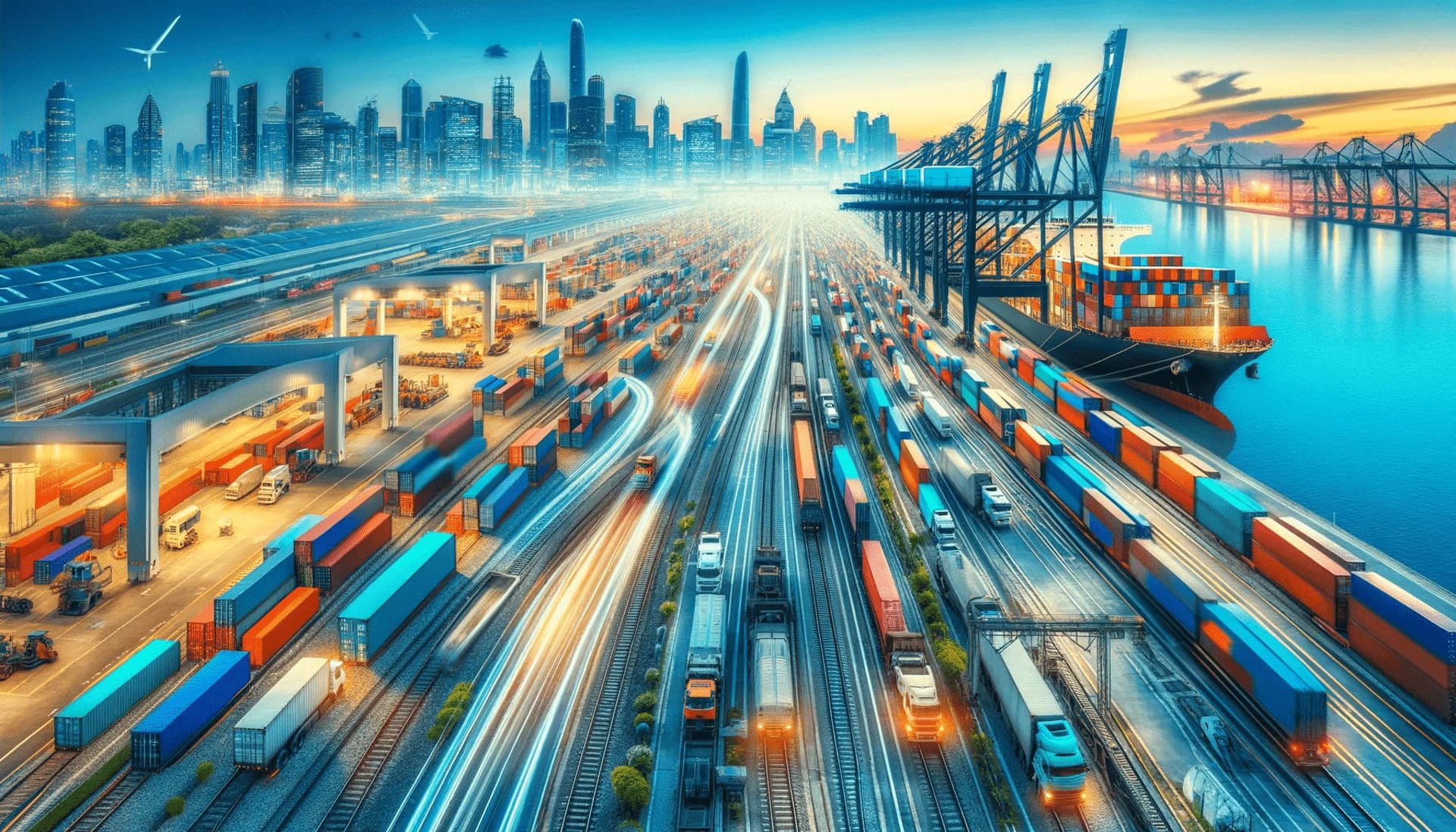
Discovering the Intermodal Transport Chain
Diego Cuadrado
1/11/2024


A More Modern Example of these Innovations in Transport is Provided by the British East India Company, which, before the opening of the Suez Canal, established a maritime route between England and India through the Mediterranean. This service was characterized by a novel approach: a ship left England for Port Said, where another waited to complete the journey from Suez to India. Meanwhile, the land portion between Port Said and Suez was carried out using dromedaries, taking advantage of their ability to cross the arid desert.
These examples illustrate a constant search for efficiency and safety in the transportation of goods, an effort that has shaped entire civilizations.
The heart of intermodal transport
Now, let's delve into the details of the intermodal transportation chain. Before we do, it's crucial to understand that intermodal transport is based on a system where goods move from their origin to their final destination through various means of transportation, all without the need to change or handle the cargo!
In this mode of transport, the container emerges as the unsung hero and essential element of the process. However, the container is not alone, as there are various cargo units designed to meet different needs, including mobile boxes and semi-trailers. Each of these units plays a vital role in the intermodal chain, ensuring that everything from small packages to large loads reaches its destination safely and efficiently.
The intermodal transport process begins with the collection of goods, whether from a factory or warehouse. This first step usually involves a truck equipped with a container platform, responsible for transporting the container to a seaport or railway terminal. This phase is commonly known as the 'first mile'. Once the container reaches its intermediate destination, which could be another port or terminal, a second truck with a similar platform takes the container to its final location. This last segment is known as the 'last mile', and the final arrival point can be another warehouse or a factory.
The interoperability evolution and sustainability
The current focus in intermodal transportation is not to compete between modes, but to complement them. The goal is to form integrated and competitive logistics chains, crucial in a globalized world. This paradigm shift is redefining logistics and opening new avenues for innovation and cooperation.
Despite its advantages, the intermodal transport chain faces unique challenges. From managing different regulatory systems to coordinating multiple actors, each step requires precision and collaboration. However, these challenges also present opportunities for innovation, from technological improvements to new logistic management strategies.
Another crucial aspect of the intermodal chain is its environmental impact. In an era where sustainability is key, this system offers a more efficient and ecological way to transport goods. Route optimization and reducing empty trips contribute significantly to reducing the carbon footprint in transport.
Looking to the future, the intermodal transport chain is set to play an even more significant role in our global economy. With technological advancements and a growing focus on sustainability, we can expect to see innovations that make transportation even more efficient, safe, and environmentally friendly.
Weaving the Global Commerce Network
The intermodal transport chain is not just a technical concept as it represents a revolution in how we understand and execute the global movement of goods. Each container, each pallet, and each cargo unit are links in an increasingly integrated and efficient network, essential for the future of commerce and international logistics.


Following the end of World War II, a revolution in global transportation unfolded, marking a before and after in how we move goods across the world. This transformation began with the invention of transportation units such as pallets and containers, paving the way for what we now know as the intermodal transport chain.
The origins of the intermodal chain
To fully understand this phenomenon, we must look back in time. The history of transportation is rich and diverse, ranging from the ancient dolias found in Liguria (Italy), which were wooden containers used to transport liquid or semi-liquid loads, to the cages used by the Romans to transport wild beasts from Africa to Roman circuses.
Contact us
+34 695721862
contact@optivlak.eu
Subscribe to our newsletter
Location
Škofa Maksimilijana Držečnika 6,
2000 Maribor (Slovenia)
Hours
Mon-Fri: 8:00 - 18:00
Sat: 9:00 - 15:00
Sun: Closed
This project is funded by EIT Urban Mobility, an initiative of the European Institute of Innovation and Technology (EIT), a body of the European Union. EIT Urban Mobility acts to accelerate positive change on mobility to make urban spaces more liveable. Learn more: eiturbanmobility.eu.


